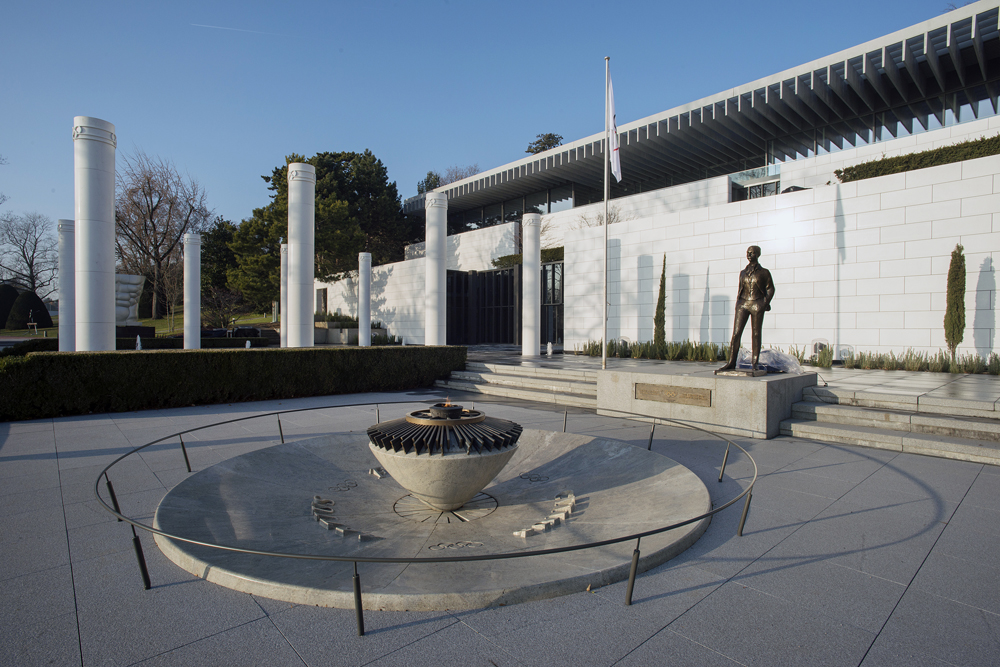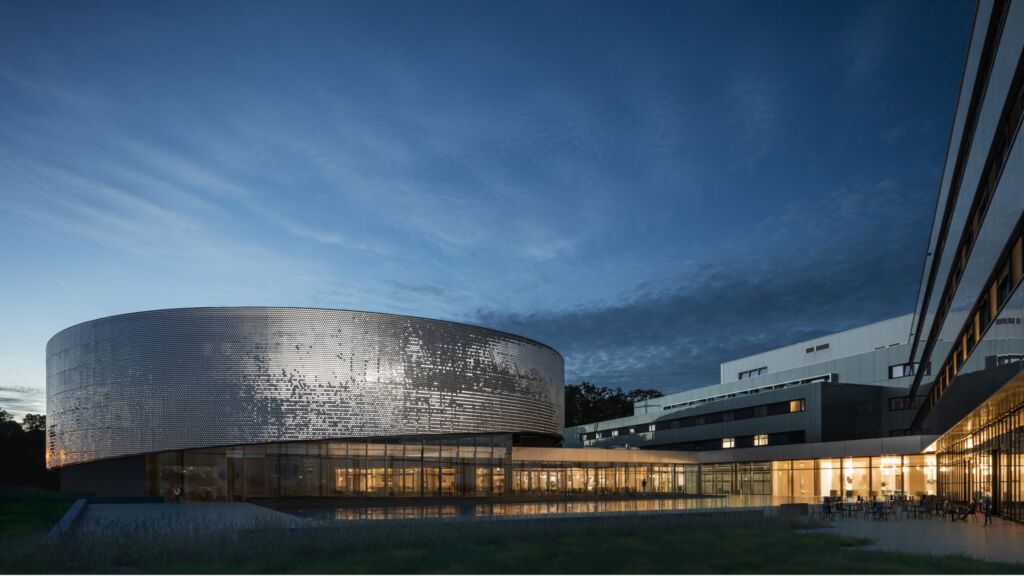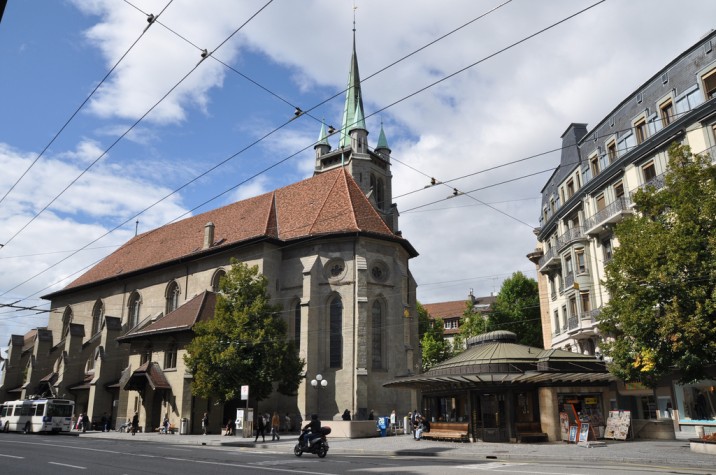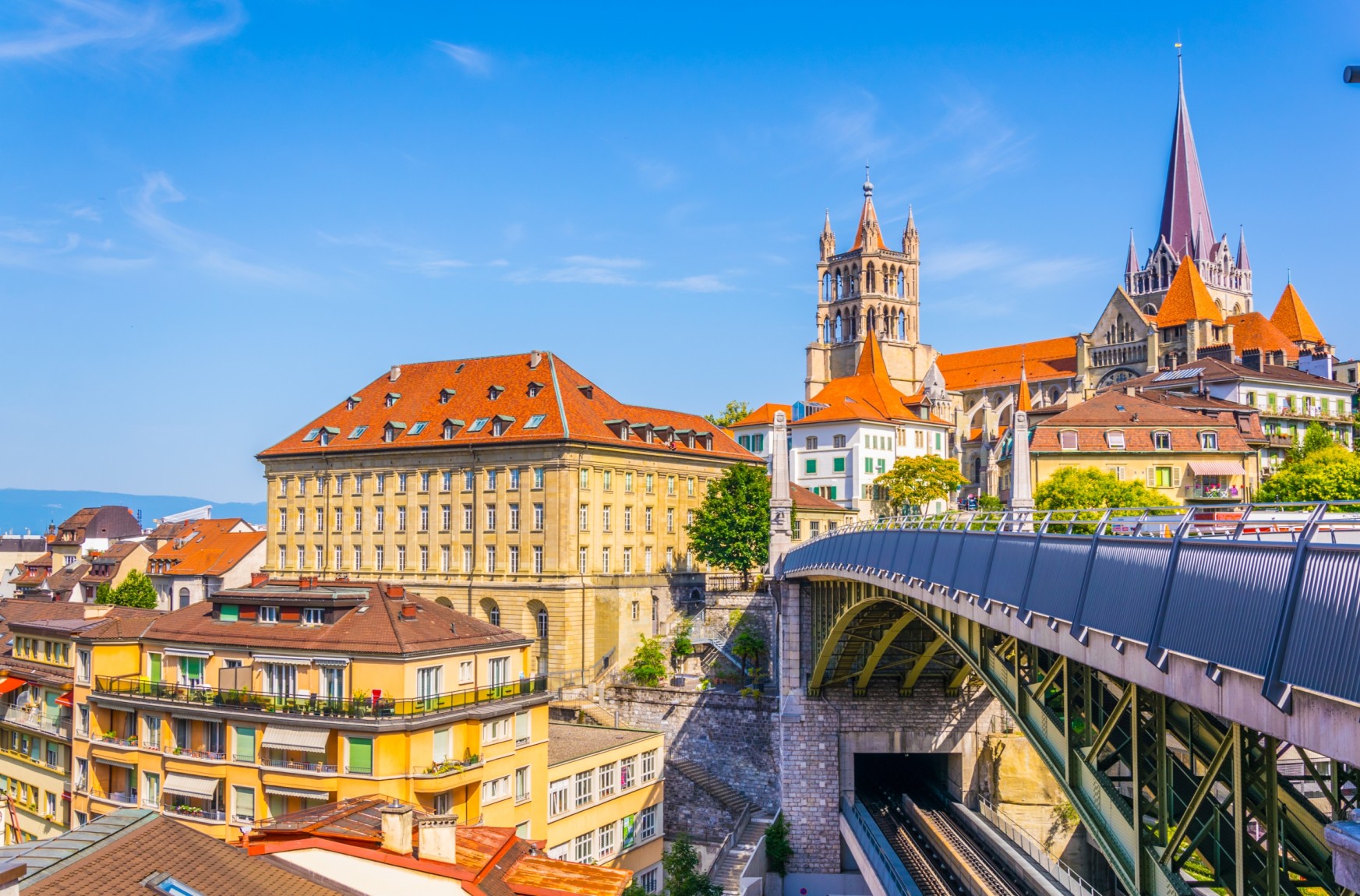Table of Contents
About
Lausanne is the fourth-largest city in Switzerland as well as the capital and the biggest city of Vaud Canton. Situated on Lake Geneva’s Northern shore and the Jorat Heights of the Southern Shore, the city portrays a hilly appearance with the Louve and Flon streams flowing through its center. Lausanne city serves an extensive network of national as well as international transport and became the first-ever city to own a rubber-typed metro system. In addition, the city owns a world-class education system and also features several museums, art galleries, monuments, libraries, and other tourist destinations.
From being an old city, it turned into a commercial one, organizing trade fairs, conventions, and meeting venues which led to the opening up of many hotels and lakeside cottages for the tourists. On top of this, it is the world headquarters of the Olympics with the Olympic museum as its most popular and iconic landmark. The city features Lake Geneva, where visitors can experience the stunning surroundings comprising mountainous views, cafés, hotels, cathedrals, palaces, and many more things. If you are planning a vacation to Switzerland, make sure to put this piece of Swiss paradise on your travel itinerary. A great way to see the city is through a walking tour. Tours start daily in the city center. Not only does this allow visitors to sightsee but it is also a great opportunity to get background information from a local travel guide. Some tourists prefer to rent a car and travel in and around the city to explore the surrounding area.
History and Culture
Lausanne, the oldest city of Switzerland, became the capital city of Vaud Canton in 1798 after having conquered several settlements, including the Burgundian settlement, the Alemanni settlement, and more. It also signed two treaties. The first one is between Turkey and Italy and the second was between the Allies of World War I and Turkey. In 1964, Lausanne city became the site for the Swiss National Exhibition showing various historic constructions, cathedrals, churches, aquariums, and several more sites that got erected but rebuilt in the 14th century. In terms of culture, Lausanne is the intellectual cultural center of the French part of Switzerland. The city is also a popular and captivating tourist landmark that is the birthplace of well-known literal thinkers, including Alexandre Vinet, Juste Olivier, Charles Secretan, Benjamin Constant de Rebecque.
Things To Do in Lausanne
Lake Geneva

Situated in the north of the Alps and between France and Switzerland, Lake Geneva is one of the largest lakes as well as one of the most captivating tourist landmark in Western Europe. Earlier, Lake Geneva was formerly known as Lacus Lemannus, which means port’s lake, but later Lake Geneva became its predominant name. Lake Geneva forms a crescent shape and is divided into three parts that are called Haut Lac (upper lake), Grand Lac (large lake), and Petit Lac (small lake). In addition, the lake offers beautiful and mesmerizing views of the snowy mountain peaks, the shoreline of gardens, palm trees, picturesque villages, sports activities (including Yacht racing), events such as Tour du Lac, swimming competitions, and more.
The Ouchy Promenade

The Promenade Ouchy is the most relaxing lakefront district and a popular tourist destination in Lausanne city. Located just south of the city center, the promenade Ouchy features a 12th-century neo-gothic style castle, the Chateau d’Ouchy, which was built between 1889 and 1893 by the Bishop of Lausanne. Now the castle serves as a hotel. Near the castle, the promenade features a memorial of Lord Byron, who wrote the prisoner of Chillon, and the palace turned hotels where several treaties for Lausanne city were signed, including the Accord de Lausanne in the Beau-Rivage Palace. In addition, the lakeside promenade also features a Thai Pavilion, views of the Savoy Alps, boat rides, and mesmerizing views of the shore. During the warm and sunny summer afternoons, the promenade offers visitors the best views and atmosphere to chill out, hike around, and enjoy a small picnic. The lake also highlights a peaceful environment to read books or sit on the benches, swim in the lake, rent a paddleboat from peddlers, and stay in luxury hotels while experiencing the breath-taking views of the water. For solo travelers, Ouchy is a fantastic place to meet new people, as it is usually crowded with visitors from around the world.
The Olympic Museum

Lausanne city houses the most captivating and important tourist landmark, the Olympic Museum that exhibits everything about the Olympic Movement. The museum is the headquarters of the International Olympic Committee that features more than 10,000 artifacts of the Olympic Games and is the largest archive of the Olympics in the entire world. Located at the Ouchy promenade, the Olympic museum was founded in 1993 and was built by the Mexican architect Pedro Ramirez Vazquez. The museum is organized into three themes represented on three separate floors – the Olympic World, the Olympic Games, and the Olympic Spirit.
On the first floor, the museum offers a brief depiction of the history of the Olympic Games and its rebirth in the 19th century by displaying the documented video, Olympic torches, etc. On the second floor, it focuses on the Olympic Games highlighting the sports equipment, introduction to the Youth as well as the Paralympic Games, over 1000 video clips, and an individual athlete station. The third floor allows visitors to experience the Olympic Village by testing their agility, mental skills, and balance with interactive exercises. The museum is surrounded by the Olympic Park which is located in the south of Lausanne between Lake Leman and the museum. In the park you will find a sculpture garden comprising numerous sport-themed artworks. The most notable artworks are the French sculptures of Auguste Rodin’s The American Athlete, Niki de Saint Phalle’s Les Footballeurs, and more. If you are a sports fan, make sure to put the Olympic Museum on your itinerary. The entrance fee is CHF18 (ca.20 USD) for the Olympic Museum.
Aquatis Aquarium

The Aquatis Aquarium is the largest aquarium in Europe and one of the most alluring highlights of Lausanne city, representing the theme of freshwater aquarium and vivarium. Located on the outskirts of the city, the living Aquatis aquarium gives Lausanne a new landmark with its spherical facade decoration amidst the sparkling fish scales. The aquatis aquarium features cutting edge technology that takes an ecological as well as an immersive look at the freshwater containing over 10,000 fishes and reptiles. Whisking you around the five continents from the glacier of Europe to the Amazon, the aquarium begins with the glacier of the European Alps, the Rhone river, the Mediterranean, the bright and vibrant fishes as well as crocodiles of Africa, the toothy piranhas of the Amazon, and the mangroves of Oceania and Asia. The aquarium also features a vivarium exhibiting over 100 living reptiles, arachnids, as well as amphibians and a three-star hotel in its second building. The hotel has 130 rooms, seminar rooms, medical offices, emergency departments, etc., meeting the basic needs of the visitors. The ticket for Aquatis costs CHF 29 (ca. 31 USD).
Église Saint-François

The reformed church of Saint Francois is another popular tourist destination in Lausanne city. The church was built in 1258 by the Franciscan and got its name, St. Francois because of its parallel standing to the Franciscan convent tower, which was dissolved during the Reformation of Protestants. Surrounded by wooden houses, banks, astonishing buildings, post offices, shops, and marketplaces, the church has impressive medieval and modern structural architecture including an elegant bell tower. The interior of the church incorporates glass windows portraying a peaceful and relaxing environment. Additionally, the church offers classical music concerts, organ recitals, spiritual activities, and daily prayers. During the month of December, it features a phenomenal Christmas celebration which attracts a lot of tourists from around the area.
Lausanne Cathedral

Located in the center of Lausanne you will find the famous Lausanne Cathedral. Its construction started in 1170 by an unknown architect. Over the years, different architects continued designing and building the cathedral. The engineer Jean Cotereel completed most of the major designs. He included a porch and two towers. Unfortunately, one of them never finished. Eventually, the building was consecrated in 1275 by Emperor Rudolph of Hapsburg and Pope Gregory X. Even though In the 15th century, the cathedral became a protestant church and underwent several changes. The most major change was a liturgical area that was built in the nave. In the following centuries, the building had to undergo several restorations. This is why its colorful interior is very well maintained nowadays. Visitors can now marvel at paintings in the Chapel of Virgin, the statues of the painted doorway, and a famous rose window. Additionally, tourists can climb up the bell tower for a magnificent view of the city center. Since 1405, steep stairs go up to the lookout. A Lausanne tradition is the professional lookout person, who shouts the time into the streets every hour from 10 am to 2 am. The entrance to climb up the bell tower is donation-based.
Palais de Rumine

Palais de Rumine is a building that was built in the late 19th century and the early 20th century.
In 1871, the aristocrat Gabriel de Rumine sponsored 1,5 Mio. Francs to the city of Lausanne to build a building for public use. In 1889, it was decided that a new university was going to be built and an architecture contest took place. Gaspard Andre of Lyon won this and was given the responsibility to design the building. A good choice, considering that the building is now called an architectural masterpiece with its giant stone stairs, its bell tower, its lovely pool in the atrium, its impressive galleries, and its overall beautiful Florentine-Renaissance-style. Over the years, the Palais has hosted several scientific and artistic collections and the university library. However, part of the library has been moved due to a lack of space. Today, the building features part of the university’s library and several museums. These museums are the cantonal museums of geology, zoology, archaeology, and history, as well as the cantonal money museum.
Sauvabelin Tower

The Sauvabelin Tower is located in the Sauvabelin forest and was built in 2003. It is located in a lovely, little park with plenty of small hiking trails, a playground for children, and a café. With its peaceful environment, the park is the perfect place to get away from the city crowds and enjoy some solitude. The Sauvabelin Tower is entirely made out of wood and 30 meters high. 302 stairs lead up to the top of the tower. From here you are more than 30 meters above the trees underneath you. Visitors can enjoy a magnificent panoramic view of the city, Lake Leman, and the surrounding mountains. A bus departs regularly from town to the Sauvabelin Tower and costs as little as CHF 4 (ca. 4,30 USD). Alternatively, visitors can walk for 30 minutes to reach the tower. The entrance is free.
How to get to Lausanne
There are several ways to reach Lausanne. Whether you want to go on a road trip from a nearby city or are traveling internationally, there are many options.
By Flight – If you plan to travel by flight, you will need to fly to Geneva airport, as it is the nearest airport to Lausanne. From there, you can take a train or bus to Lausanne.
By Train – The Swiss federal rail systems operate the trains to Lausanne. Visitors can take trains from Zurich, Geneva, Bern, Brig, St. Gallen, and Neuchatel to Lausanne. Apart, can also travel via train from Paris, Milan, and Venice.If you are traveling from Geneva airport, the train departs every 20 minutes and takes around 50 minutes to Lausanne. Tickets cost between CHF 26 (ca. 28 USD) and CHF 50 (ca. 54 USD).
By Bus – Visitors can also travel to Lausanne by taking a bus from Spain, France, Geneva, Basel, and other cities of Central Europe. A good budget option for backpackers is Flixbus, which offers the lowest prices. From Geneva, you can buy a Flixbus ticket for as low as CHF 5,50 (ca. 6 USD). The bus ride takes around one hour.
By Waterways – You may also travel to Lausanne by water. Daily ferries are available to take you to Lausanne from Evian, Coppet, Vevey, Nyon, Montreux, and Geneva making the experience a mesmerizing one. From Geneva, a ticket costs CHF 23 (ca. 25 USD) and the ferry ride takes around 45 minutes.
